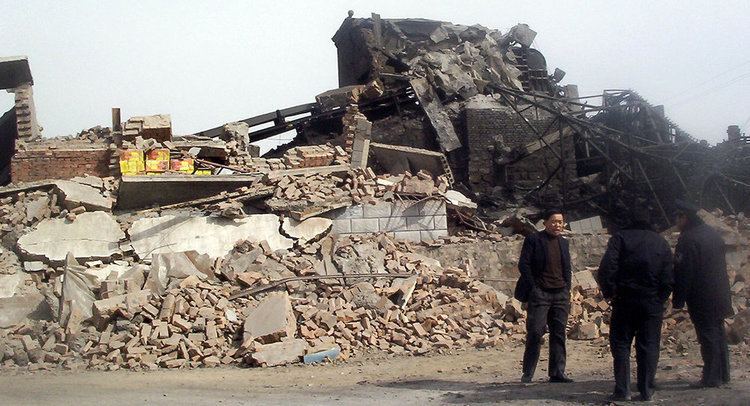 | ||
Benxihu (Honkeiko) Colliery (simplified Chinese: 本溪湖煤矿; traditional Chinese: 本溪湖煤礦), located in Benxi, Liaoning, China, was first mined in 1905. It started as an iron and coal mining project under joint Japanese and Chinese control. As time passed, the project came more and more under Japanese control. In the early 1930s, Japan invaded the north east of China and Liaoning province became part of the Japanese controlled puppet state of Manchukuo. During the Second Sino-Japanese War, the Japanese forced the Chinese—some of whom had been captured from local military organizations—to work the colliery under very poor conditions. Food was scarce and workers did not have sufficient clothing. Working conditions were harsh and diseases such as typhoid and cholera flourished. Typically miners worked 12-hour shifts or longer. The Japanese controllers were known to beat workers with pick handles and the perimeter of the mine was fenced and guarded. Many describe the work as slave labour.
Coal dust explosion
On April 26, 1942, a gas and coal-dust explosion in the mine sent flames bursting out of the mine shaft entrance. Miners' relatives rushed to the site but were denied entry by a cordon of Japanese guards who erected electric fences to keep them out. In an attempt to curtail the fire underground, the Japanese shut off the ventilation and sealed the pit head. Witnesses say that the Japanese did not evacuate the pit fully before sealing it, trapping many Chinese workers underground to suffocate in the smoke. Thus the actions of the Japanese are blamed by the Soviet Union for needlessly increasing the death toll.
It took workers ten days to remove all the corpses and rubble from the shaft. The dead were buried in a mass grave nearby. Many victims could not be properly identified due to the extent of the burns. The Japanese at first reported the death toll to be just 34. Initial newspaper reports were short, as little as 40 words, and downplayed the size of the disaster as a minor event. Later the Japanese erected a monument to the dead. This stone gave the number of dead to be 1,327. The true number is believed to be 1,549, 34% of the miners working that day, making it the worst disaster in the history of coal mining and the second worst recorded industrial accident. Of this number, 31 were Japanese, the rest Chinese.
The mine continued to be operated by the Japanese until the end of World War II in 1945. Following the Japanese withdrawal, the workers took control of the site. With the liberation after the war, the Soviet Union investigated the accident. They found that only some of the workers died from the gas and coal-dust explosion. The Soviet report states that most deaths were of carbon monoxide poisoning due to the closing of ventilation and sealing of the pit head after the initial explosion.
